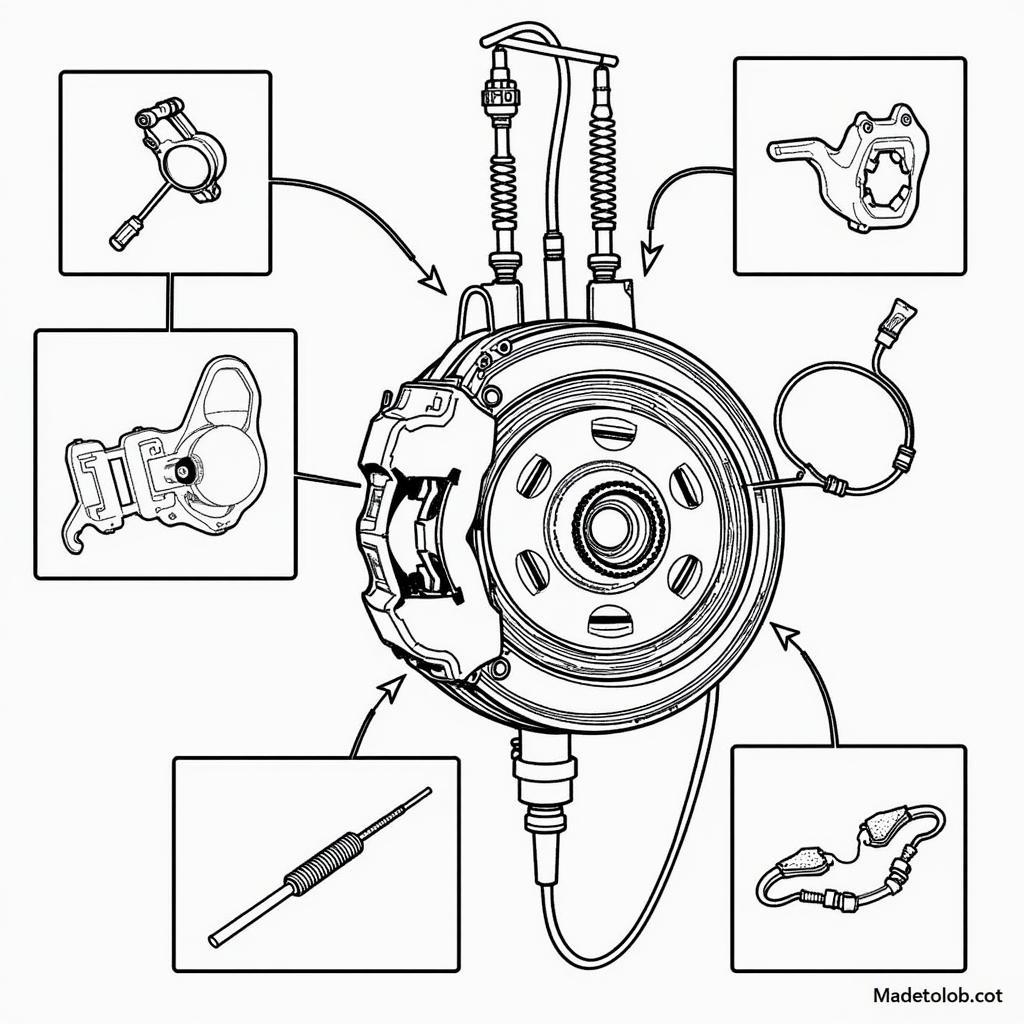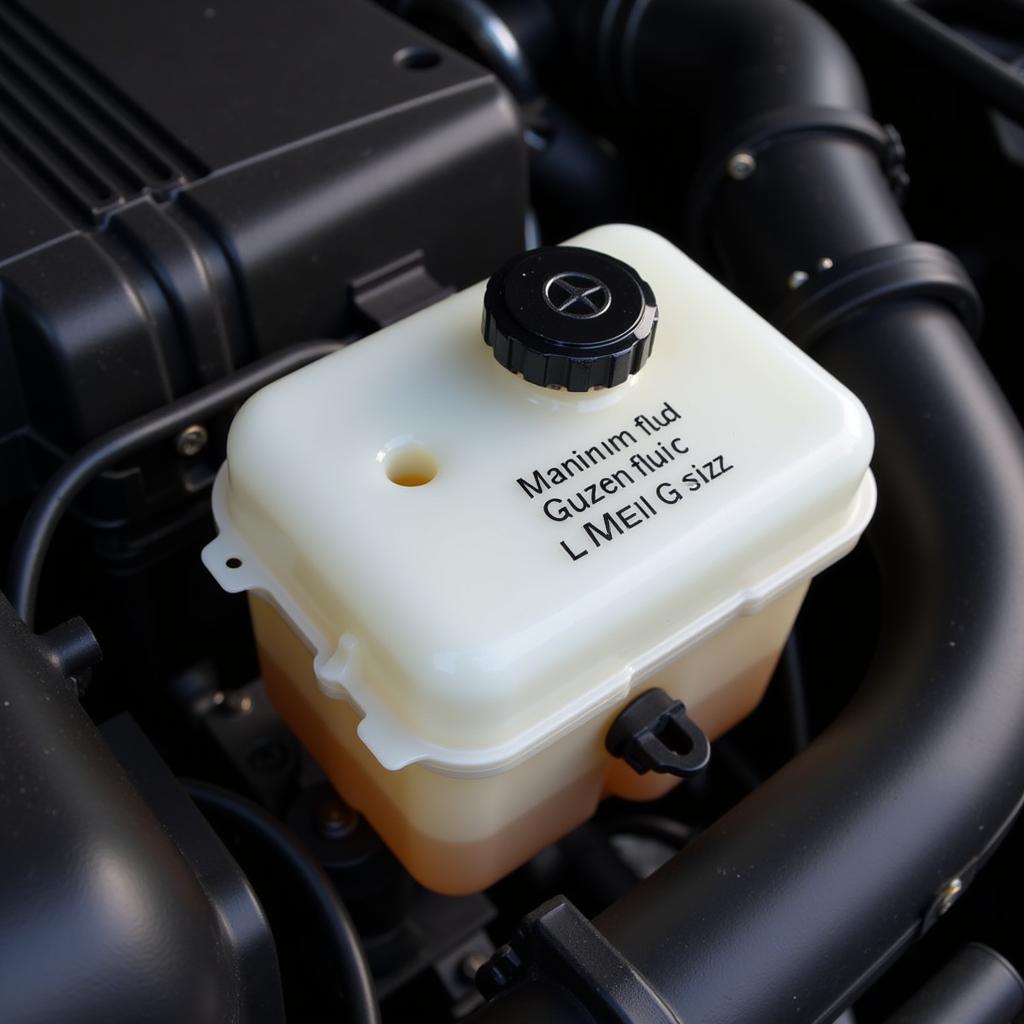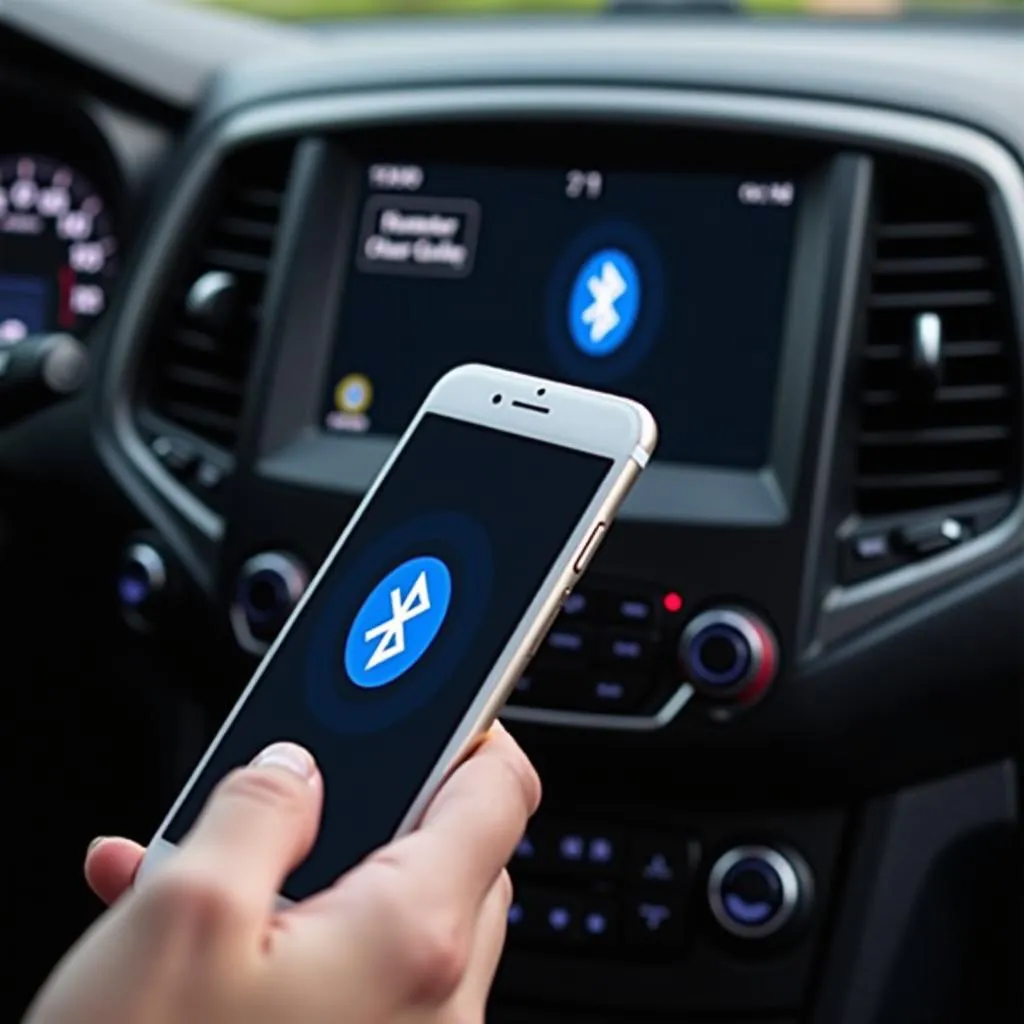Driving your Mazda CX-3 and suddenly noticing the brake warning light illuminating on your dashboard can be a nerve-wracking experience. This light is your car’s way of saying there’s an issue with your braking system that requires immediate attention. Ignoring this warning could lead to serious safety hazards and costly repairs down the line. Don’t panic – this article will guide you through the common reasons your Mazda CX-3 brake warning light might be on, how to diagnose the problem, and the steps you can take to get back on the road safely.
Understanding Your Mazda CX-3 Brake Warning Light
The brake warning light in your Mazda CX-3 is part of a complex system that monitors different aspects of your vehicle’s braking system. It’s designed to alert you to potential issues ranging from low brake fluid to more serious problems like a malfunctioning anti-lock brake system (ABS). When the light comes on, it doesn’t always mean a complete brake failure is imminent. However, it’s crucial to understand the different ways the warning light might present itself and what each signal could indicate:
- Solid Light: A solid brake warning light usually indicates low brake fluid, which could be caused by worn brake pads or a leak in the system.
- Flashing Light: A flashing brake warning light often signals a problem with the ABS system. This could be due to a faulty sensor, a malfunctioning pump, or an issue with the ABS control module.
 Mazda CX-3 dashboard with brake warning light illuminated
Mazda CX-3 dashboard with brake warning light illuminated
Common Causes of a Mazda CX-3 Brake Warning Light
Identifying the root cause of your Mazda CX-3’s illuminated brake warning light is essential for effective troubleshooting. Here are some of the most common culprits:
-
Worn Brake Pads: Brake pads are designed to wear down over time. When they become too thin, a sensor sends a signal to activate the brake warning light. This is one of the most frequent reasons for the light to come on.
-
Low Brake Fluid: Brake fluid is the lifeblood of your braking system, transferring force from the brake pedal to the wheels. A leak in the system, worn brake components, or even time can cause brake fluid levels to drop, triggering the warning light.
-
Faulty ABS Sensor: The ABS system relies on sensors to monitor wheel speed and prevent wheel lockup during braking. A malfunctioning sensor can disrupt the ABS system’s functionality, illuminating the warning light.
-
ABS Module Issues: The ABS module acts as the brain of the anti-lock brake system. Issues with the module itself, such as electrical problems or software glitches, can lead to a flashing brake warning light.
-
Parking Brake Engaged: It might seem obvious, but sometimes the simplest explanation is the most likely one. If your parking brake is even slightly engaged, it can trigger the brake warning light.
 Components of a Mazda CX-3 braking system
Components of a Mazda CX-3 braking system
Diagnosing the Problem: What to Check First
Before rushing to a mechanic, there are a few preliminary checks you can perform yourself to help pinpoint the cause of your Mazda CX-3’s brake warning light:
-
Check Your Parking Brake: Ensure your parking brake is fully disengaged. Sometimes, even a slight engagement can trigger the warning light.
-
Inspect Your Brake Fluid Level: Locate the brake fluid reservoir under the hood of your car. The reservoir will have a “min” and “max” marking. If the fluid level is below the “min” line, it needs to be topped up. Caution: Only use the brake fluid type specified in your owner’s manual.
-
Visually Inspect Your Brake Pads: If you’re comfortable doing so, you can visually inspect your brake pads through the spaces between the wheel spokes. If the pads look thinner than ¼ inch, they’re likely due for a replacement.
-
Consult Your Mazda CX-3 Owner’s Manual: Your owner’s manual is a treasure trove of information. It can provide specific guidance on interpreting warning lights and troubleshooting basic issues related to your Mazda CX-3’s braking system.
When to Seek Professional Help
If your preliminary checks haven’t revealed an obvious solution, or if the problem persists, it’s crucial to seek professional help immediately. Attempting to diagnose or repair complex brake system issues without the necessary expertise and equipment can be dangerous.
Remember, a properly functioning brake system is paramount to your safety and the safety of others on the road. Here are some situations where professional help is essential:
- You suspect a brake fluid leak: Brake fluid leaks can be hazardous and should only be handled by a qualified mechanic.
- Your brake warning light is flashing: A flashing light often indicates an ABS issue that requires specialized diagnostic tools.
- You hear unusual noises when braking: Grinding, squealing, or clicking sounds when you apply the brakes could signal serious problems.
Preventing Future Brake Warning Light Issues
While some brake wear and tear is inevitable, proactive maintenance can help prevent many brake warning light situations. Follow these tips to keep your Mazda CX-3 braking system in top condition:
- Adhere to Your Scheduled Maintenance: Regular maintenance checks, as outlined in your owner’s manual, will include brake inspections.
- Listen to Your Brakes: Unusual noises like squealing or grinding are often early indicators of brake problems.
- Don’t Ride Your Brakes: Avoid constantly resting your foot on the brake pedal while driving. This can cause premature wear and heat buildup in the system.
- Be Aware of Driving Conditions: Driving in hilly areas or stop-and-go traffic puts extra stress on your brakes, potentially leading to faster wear.
Conclusion
Ignoring a brake warning light in your Mazda CX-3 can have serious consequences. Understanding what this light is trying to tell you, performing some basic checks, and knowing when to seek professional help are crucial for maintaining a safe and reliable vehicle. By addressing the issue promptly and proactively maintaining your braking system, you can ensure optimal performance and peace of mind on the road.
Frequently Asked Questions
Q: Can I drive my Mazda CX-3 with the brake warning light on?
A: It’s highly discouraged. While you might still have some braking ability, it’s crucial to have the issue diagnosed and repaired immediately to avoid potential hazards.
Q: How much does it cost to fix a brake warning light on a Mazda CX-3?
A: The cost varies depending on the underlying cause. Simple fixes like brake pad replacements are generally more affordable than complex repairs involving the ABS system.
Q: How often should I get my Mazda CX-3’s brakes checked?
A: It’s recommended to have your brakes inspected at least once a year or every 12,000 miles, or as outlined in your owner’s manual.
Q: Can I top up my Mazda CX-3’s brake fluid myself?
A: Yes, you can top up the brake fluid if you’re comfortable doing so. Refer to your owner’s manual for the correct type of fluid and instructions. However, if you notice a consistent need to add fluid, it’s crucial to have the system inspected for leaks.
Q: Can I prevent my Mazda CX-3 brake warning light from coming on?
A: While you can’t entirely prevent brake wear and tear, following a proactive maintenance schedule and adopting good driving habits can significantly reduce the likelihood of brake warning light issues.
This article provides a general overview and should not replace professional advice. If you are experiencing issues with your Mazda CX-3 brake system, consult a qualified mechanic for proper diagnosis and repair. You can find more information about brake system warning lights in other Mazda models like the Mazda CX-5 brake system warning light or the Mazda 2 brake system warning light.


